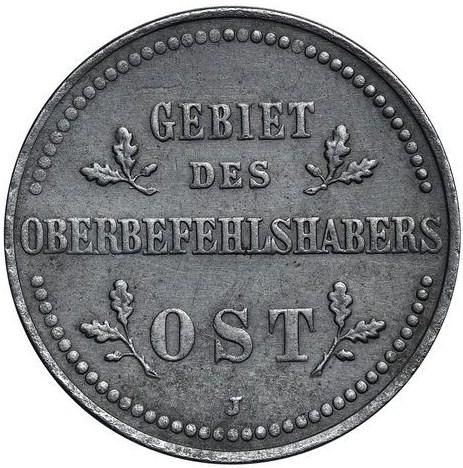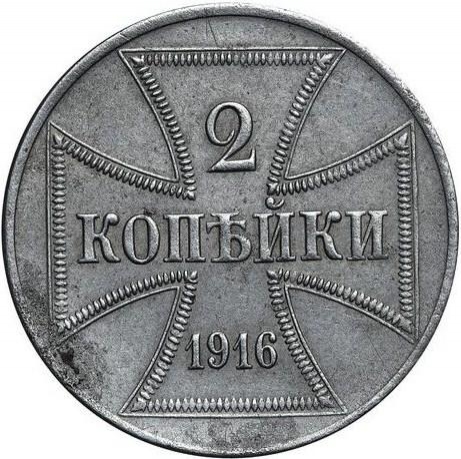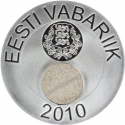You are about to finish your registration. Please check your mailbox (including spam folder). There should be a letter with a confirmation link. Check setting to make sure that your e-mail address is correct.
Send letter againDescription
During the First World War Germany invaded Russia and occupied large areas in Western parts of the Russian Empire included Poland, Lithuania, Latvia, and Estonia. For the occupied lands German military authors issued 1, 2, and 3 Kopecks coins and some banknotes.
The First World War was a global war originating in Europe that lasted from 28 July 1914 to 11 November 1918. More than 70 million military personnel, including 60 million Europeans, were mobilised in one of the largest wars in history. Over nine million combatants and seven million civilians died as a result of the war.
The war drew in all the world's economic great powers, assembled in two opposing alliances: the Allies (based on the Triple Entente of the Russian Empire, the French Third Republic, and the United Kingdom of Great Britain and Ireland) versus the Central Powers of Germany and Austria-Hungary.
The Russian government collapsed in March 1917, and a revolution in November followed by a further military defeat brought the Russians to terms with the Central Powers via the Treaty of Brest Litovsk, which granted the Germans a significant victory. After a stunning German offensive along the Western Front in the spring of 1918, the Allies rallied and drove back the Germans in a series of successful offensives. On 4 November 1918, the Austro-Hungarian empire agreed to an armistice, and Germany, which had its own trouble with revolutionaries, agreed to an armistice on 11 November 1918, ending the war in victory for the Allies.
Obverse

|
The legend 'The area of the Commander in Chief of the East' (then it was Paul von Hindenburg) appears between some oak leaves. GEBIET |
|---|---|
Reverse

|
A stylized version of an Iron Cross containing the denomination in Kopeks (in Cyrillic), the currency of the occupied lands, and the date. 2 |
| Edge |




_Rubles_5/1991_14.01.2019_00.50-125.jpg)
_Rubles_5/1991_14.01.2019_00.50_01-125.jpg)
_Rubles_10/1991-1992_14.01.2019_01.23-125.jpg)
_Rubles_10/1991-1992_14.01.2019_01.23_01-125.jpg)